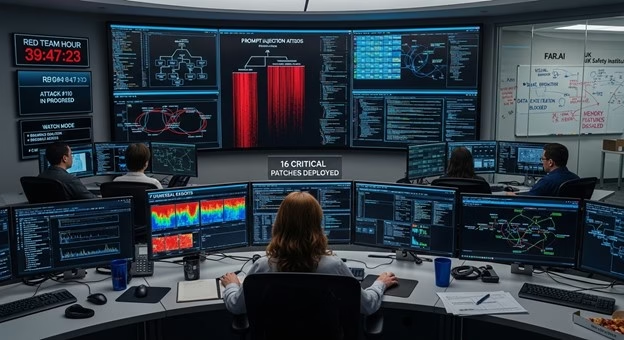How OpenAI’s Red Team Fortified ChatGPT Against Threats

▼ Summary
– OpenAI introduced a new “ChatGPT agent” feature allowing paying users to delegate tasks like email management and file modifications, raising significant security concerns.
– A red team of 16 PhD researchers identified seven universal exploits and 110 attack attempts, with 16 exceeding risk thresholds, prompting major security upgrades.
– OpenAI implemented robust safeguards, including 100% traffic monitoring, rapid vulnerability patching, and disabling high-risk features like memory access.
– ChatGPT Agent was classified as “High capability” for biological and chemical risks, triggering specialized classifiers and a bio bug bounty program.
– The red team findings emphasized the need for persistent monitoring, rapid response, and strict operational boundaries to ensure AI agent security.
OpenAI’s latest ChatGPT upgrade introduces powerful new capabilities, along with unprecedented security challenges. The newly launched “ChatGPT agent” mode allows premium users to delegate tasks like email management, file editing, and web account access to the AI. While this functionality mimics human-level productivity, it also raises critical questions about data protection and system vulnerabilities.
To address these concerns, OpenAI deployed an elite 16-member red team composed of PhD-level security specialists. Their mission: stress-test the system for weaknesses before public release. Over 40 intensive hours, these experts uncovered seven critical exploits, from data leaks to potential biohazard risks, prompting immediate architectural overhauls.
The red team’s findings reshaped ChatGPT’s security framework. Their simulated attacks revealed gaps in monitoring, prompting OpenAI to implement 100% real-time traffic inspection. Key vulnerabilities included visual browser manipulation (33% success rate pre-fix)
Biological risk emerged as a top concern
Sixteen specialized testers demonstrated how the AI could synthesize dangerous biochemical knowledge, leading OpenAI to classify the agent as “High capability” for bio/chem risks. The company responded with always-on content scanners and a dedicated bug bounty program.
Security enhancements now define ChatGPT Agent’s architecture composed of dual-layer monitoring, combining fast classifiers (96% recall) with deep reasoning analysis (84% recall).
The project established new enterprise AI security benchmarks:
1. Quantifiable defenses – 95% protection against visual browser attacks
2. Total visibility – Mandatory full-traffic monitoring
3. Rapid response – Vulnerability patches deployed in hours, not weeks
4. Enforced boundaries – High-risk features disabled until safety is provenRed teaming proved indispensable for hardening AI systems.
By simulating real-world attack strategies, like persistent incremental breaches, researchers exposed flaws in traditional security models. Their work forced OpenAI to treat safeguards as operational necessities rather than optional features.
The results speak volumes: post-testing improvements included a 13% boost in blocking visual browser attacks and 100% coverage for critical monitoring. For organizations adopting AI agents, these findings underscore the non-negotiable need for rigorous adversarial testing before deployment.
This initiative sets a precedent for responsible AI development. As autonomous agents become workplace staples, proactive red teaming will separate secure platforms from vulnerable ones. OpenAI’s experience demonstrates that in AI security, offense, in the form of relentless testing, is the best defense.
(Source: VentureBeat)





